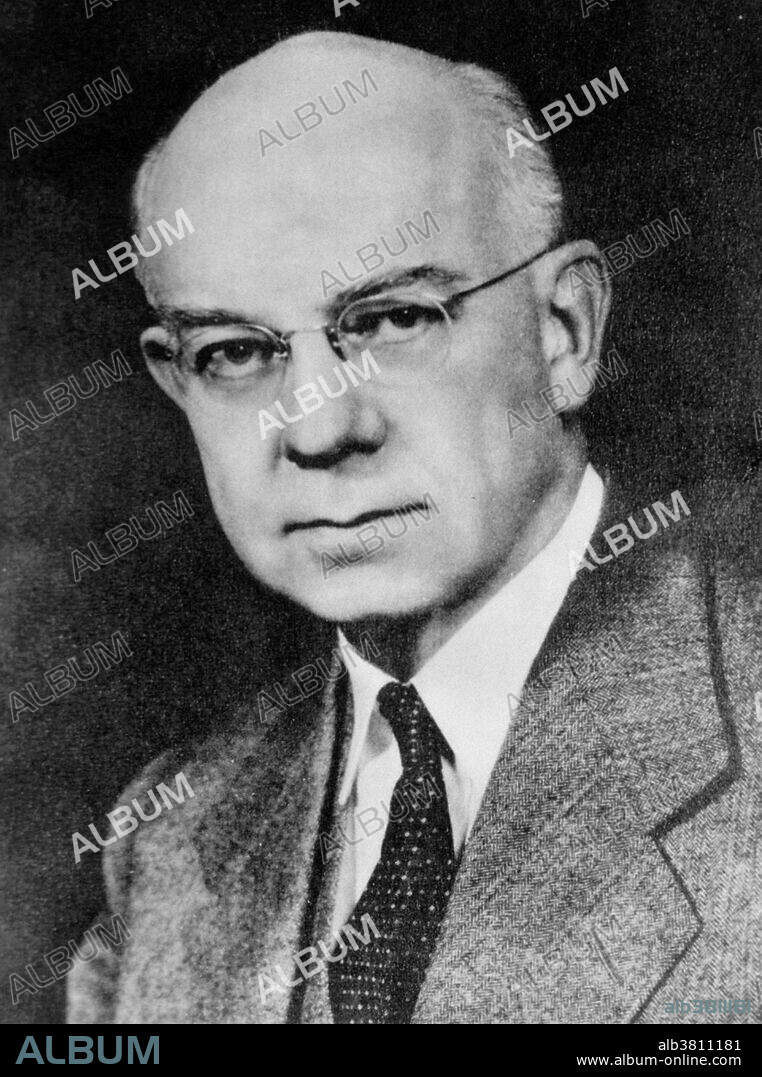alb3811181
Edward Calvin Kendall, American Chemist

|
Zu einem anderen Lightbox hinzufügen |
|
Zu einem anderen Lightbox hinzufügen |



Haben Sie bereits ein Konto? Anmelden
Sie haben kein Konto? Registrieren
Dieses Bild kaufen.
Nutzung auswählen:

Titel:
Edward Calvin Kendall, American Chemist
Untertitel:
Siehe automatische Übersetzung
Edward Calvin Kendall (1886-1972) was an American chemist. He attended Columbia University and got his PhD in 1910. He was Director of the Division of Biochemistry at the Mayo Foundation where he did his research. Kendall made several notable contributions to biochemistry and medicine. His most notable discovery was the isolation of thyroxine. Kendall was also involved with the isolation of glutathione and determining its structure. He then isolated several steroids from the adrenal gland cortex, one of which was initially called Compound E. Working with Mayo Clinic physician Philip Showalter Hench, Compound E was used to treat rheumatoid arthritis. The compound was eventually named cortisone. In 1950, Kendall and Hench, along with Swiss chemist Tadeus Reichstein were awarded the 1950 Nobel Prize in Physiology or Medicine for "their discoveries relating to the hormones of the adrenal cortex, their structure and biological effects." Kendall's career at Mayo ended in 1951, when he reached mandatory retirement age. He lived to the age of 86.
Bildnachweis:
Album / NLM/Science Source
Freigaben (Releases):
Bildgröße:
2700 x 3628 px | 28.0 MB
Druckgröße:
22.9 x 30.7 cm | 9.0 x 12.1 in (300 dpi)
Schlüsselwörter:
AMERIKANER • BERÜHMT • BERÜHMTE PERSÖNLICHKEIT • BIOCHEMIE • BIOCHEMIKER • CHEMIE • CHEMIKER • ENTDECKER • FORSCHER • FORSCHUNG • MANN • NOBEL • NOBELPREIS • NOBELPREISTRAEGER • NOBELPREISTRÄGER • NOTABEL • PERSON • PERSöNLICHKEITEN • PERSÖNLICHKEITEN • PORTRAIT • PROMINENZ • RHEUMA • WISSENSCH.: CHEMIE • WISSENSCHAFT: ENTDECKER • WISSENSCHAFT: FORSCHER


 Pinterest
Pinterest Twitter
Twitter Facebook
Facebook Link kopieren
Link kopieren Email
Email
